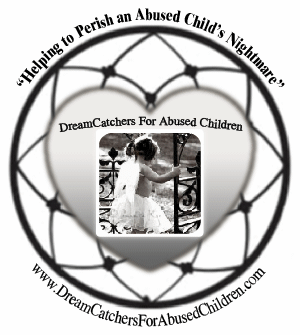Domestic Violence & Child Abuse
 Scope of the Problem
Scope of the Problem
Domestic violence is a devastating social problem that impacts every segment of the population. While system responses are primarily targeted toward adult victims of abuse, increased attention is now being focused on the children who witness domestic violence. Studies estimate that 10 to 20 percent of children are at risk for exposure to domestic violence (Carlson, 2000). These findings translate into approximately 3.3 to 10 million children who witness the abuse of a parent or adult caregiver each year (Carlson, 1984; Straus and Gelles, 1990). Research also indicates children exposed to domestic violence are at an increased risk of being abused or neglected. A majority of studies reveal there are adult and child victims in 30 to 60 percent of families experiencing domestic violence (Appel and Holden, 1998; Edleson, 1999; Jaffe and Wolfe, 1990).
Impact of Domestic Violence on Children
Children who live with domestic violence face increased risks: the risk of exposure to traumatic events, the risk of neglect, the risk of being directly abused, and the risk of losing one or both of their parents. All of these may lead to negative outcomes for children and may affect their well-being, safety, and stability (Carlson, 2000; Edleson, 1999; Rossman, 2001). Childhood problems associated with exposure to domestic violence fall into three primary categories:
- Behavioral, social, and emotional problems. Higher levels of aggression, anger, hostility, oppositional behavior, and disobedience; fear, anxiety, withdrawal, and depression; poor peer, sibling, and social relationships; and low self-esteem.
- Cognitive and attitudinal problems. Lower cognitive functioning, poor school performance, lack of conflict resolution skills, limited problem solving skills, pro-violence attitudes, and belief in rigid gender stereotypes and male privilege.
- Long-term problems. Higher levels of adult depression and trauma symptoms and increased tolerance for and use of violence in adult relationships.
________________________________________________________
STATISTICS: Provided by Safe Horizons
The Victims
- One in 4 women will experience domestic violence during her lifetime.
- Women experience more than 4 million physical assaults and rapes because of their partners, and men are victims of nearly 3 million physical assaults.
- Women are more likely to be killed by an intimate partner than men
- Women ages 20 to 24 are at greatest risk of becoming victims of domestic violence.
- Every year, 1 in 3 women who is a victim of homicide is murdered by her current or former partner.
The Families
- Every year, more than 3 million children witness domestic violence in their homes.
- Children who live in homes where there is domestic violence also suffer abuse or neglect at high rates (30% to 60%).
- A 2005 Michigan study found that children exposed to domestic violence at home are more likely to have health problems, including becoming sick more often, having frequent headaches or stomachaches, and being more tired and lethargic.
- A 2003 study found that children are more likely to intervene when they witness severe violence against a parent – which can place a child at great risk for injury or even death.
The Circumstances
- Domestic violence is most likely to occur between 6 pm and 6 am.
- More than 60% of domestic violence incidents happen at home.
The Consequences
- According to the U.S. Department of Housing and Urban Development, domestic violence is the third leading cause of homelessness among families.
- In New York City, 25% of homeless heads of household became homeless due to domestic violence.
- Survivors of domestic violence face high rates of depression, sleep disturbances, anxiety, flashbacks, and other emotional distress.
- Domestic violence contributes to poor health for many survivors. For example, chronic conditions like heart disease or gastrointestinal disorders can become more serious due to domestic violence.
- Among women brought to emergency rooms due to domestic violence, most were socially isolated and had fewer social and financial resources than other women not injured because of domestic violence.
- Without help, girls who witness domestic violence are more vulnerable to abuse as teens and adults.
- Without help, boys who witness domestic violence are far more likely to become abusers of their partners and/or children as adults, thus continuing the cycle of violence in the next generation.
- Domestic violence costs more than $37 billion a year in law enforcement involvement, legal work, medical and mental health treatment, and lost productivity at companies.
#1 FACT:
Most domestic violence incidents are never reported.
______________________________________________________
The National Domestic Violence Hotline
Help for Abused & Battered Women: Domestic Violence
An Exit Action Plan: Guidelines for Leaving
Safety planning for abusive situations
Leaving a domestic violence situation
---------------------------------------------By the time you finish reading this, 15 children will have been abused; In the next five minutes, 30 more; Within the next hour, 360 more; And by tonight, close to 8,000+ children will have suffered from abuse, 5 of which will die. Child abuse has increased 134% since 1980 and is now considered a worldwide epidemic. The high jump in child abuse deaths and the shocking increase in statistics highlights the frightening lack of public knowledge.
Educate Yourself -- Learn the Facts
It May Just Save a Child's Life!!


















![Validate my RSS feed [Valid RSS]](http://dreamcatchersforabusedchildren.com/wp-content/uploads/2009/10/valid-rss.png)












